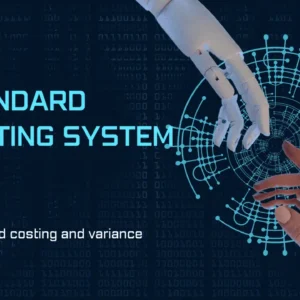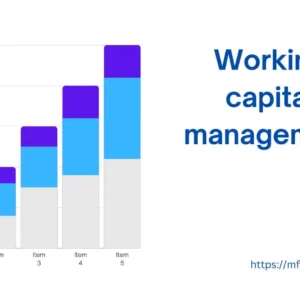What is Management by objectives?
Management by Objectives (MBO) is an approach to management that emphasizes goal setting, collaboration, and results. It involves setting specific objectives that align with the organization’s overall strategic goals and working collaboratively with employees to achieve them. MBO encourages clear communication, accountability, and regular monitoring of progress. It is an effective performance management tool.
By focusing on measurable objectives and providing feedback, MBO helps enhance employee engagement, motivation, and performance. It enables organizations to track progress, make necessary adjustments, and ensure alignment between individual and organizational goals, ultimately driving success and results.
Management by objectives explained
Management by Objectives (MBO) is a management approach that emphasizes setting clear objectives and aligning them with organizational goals. In MBO, managers and employees collaboratively establish specific, measurable, achievable, and time-bound objectives. These objectives serve as a basis for performance evaluation, decision-making, and resource allocation.
Regular feedback and monitoring of progress help ensure that employees stay on track and make necessary adjustments. MBO promotes employee engagement, accountability, and a results-oriented culture. By focusing on objective achievement, MBO helps improve organizational performance, enhance communication, and foster a sense of purpose and alignment throughout the organization.
How to use management by objectives
To effectively use Management by Objectives (MBO), consider the following steps:
Set Clear Objectives:
Clearly define objectives that are specific, measurable, achievable, relevant, and time-bound (SMART). Ensure objectives align with the organization’s strategic goals.
Collaborative Goal Setting:
Involve employees in the goal-setting process to promote ownership and commitment. Discuss objectives, clarify expectations, and encourage input and suggestions.
Establish Action Plans:
Develop action plans that outline the steps, resources, and timelines needed to achieve each objective. Assign responsibilities and ensure clarity on how progress will be measured.
Monitor Progress:
Regularly review and monitor progress toward objectives. Track key performance indicators, provide feedback, and offer support as needed. Encourage open communication and address any challenges or obstacles.
Performance Evaluation:
Conduct periodic performance evaluations to assess objective achievement. Provide constructive feedback, recognize achievements, and identify areas for improvement.
Adapt and Adjust:
Continuously evaluate the effectiveness of objectives and action plans. Make adjustments based on changing circumstances, emerging priorities, and feedback received. Foster a culture of continuous improvement.
Align Rewards and Recognition:
Align rewards and recognition with the achievement of objectives. Acknowledge and celebrate successes, reinforcing the importance of goal attainment.
Foster Communication and Collaboration:
Encourage ongoing communication and collaboration between managers and employees. Maintain an open dialogue, provide support, and address any issues or concerns that may arise.
By following these steps, organizations can effectively implement MBO and leverage its benefits, such as improved goal alignment, increased employee engagement, enhanced performance, and a results-driven culture.
Step-by-step process for management by objectives.
Define Organizational Goals:
Start by identifying the overall strategic goals and objectives of the organization. These goals provide the context for setting individual and team objectives.
Set Clear Objectives:
Work with employees to establish specific, measurable, achievable, relevant, and time-bound (SMART) objectives. Ensure that objectives are aligned with the organizational goals and address key performance areas.
Collaborate on Goal Setting:
Involve employees in the goal-setting process to promote ownership and commitment. Discuss objectives, clarify expectations, and consider input and suggestions from employees.
Establish Action Plans:
Develop action plans that outline the steps, resources, and timelines required to achieve each objective. Clearly define the tasks, responsibilities, and milestones involved. Ensure that employees understand how their work contributes to the attainment of objectives.
Monitor Progress:
Regularly track and monitor progress towards objectives. Use key performance indicators (KPIs) or other metrics to measure success. Conduct periodic check-ins and reviews to assess progress, provide feedback, and identify any challenges or roadblocks.
Evaluate Performance:
Conduct formal performance evaluations at predetermined intervals. Assess the degree to which objectives have been achieved and provide constructive feedback. Recognize and reward employees for their accomplishments.
Adjust and Adapt:
Continuously evaluate the relevance and effectiveness of objectives. Make adjustments as needed based on changing circumstances, emerging priorities, or feedback received. Ensure that objectives remain aligned with the organization’s evolving goals.
Foster Communication and Collaboration:
Encourage open communication and collaboration between managers and employees throughout the process. Maintain regular feedback exchanges, address concerns, and provide support to facilitate goal attainment.
Review and Reflect:
Periodically review the MBO process itself. Assess its effectiveness, identify areas for improvement, and make refinements to enhance its implementation and outcomes.
Advantages of management by objectives
Goal Alignment:
MBO ensures that individual and team objectives are aligned with the overall strategic goals of the organization. This alignment helps employees understand their role in contributing to organizational success and fosters a sense of purpose and direction.
Clear Focus and Direction:
MBO provides clarity by setting clear and specific objectives. Employees know what is expected of them, what they need to accomplish, and how their work contributes to the organization’s goals. This clarity improves focus and enables employees to prioritize their efforts effectively.
Improved Performance:
By setting challenging yet achievable objectives, MBO can enhance employee performance. It provides a clear benchmark for measuring progress and success. Regular monitoring and feedback in the MBO process help identify areas for improvement, allowing employees to enhance their skills and capabilities.
Employee Engagement and Motivation:
Involving employees in the goal-setting process and giving them a voice in defining their objectives increases their sense of ownership and commitment. This engagement and involvement motivate employees to perform at their best and actively contribute to goal attainment.
Enhanced Communication and Collaboration:
MBO promotes ongoing communication between managers and employees. Regular feedback exchanges, progress updates, and performance discussions facilitate open dialogue and strengthen the manager-employee relationship. It also encourages collaboration among team members to achieve shared objectives.
Development Opportunities:
MBO provides opportunities for employee development. By setting growth-oriented objectives, organizations can identify training and development needs, provide necessary resources, and offer targeted development programs. This focus on development enhances employee skills, knowledge, and career progression.
Accountability and Performance Measurement:
MBO creates a culture of accountability. Employees take ownership of their objectives and are accountable for their performance. Clear objectives and measurable outcomes enable effective performance measurement and evaluation, providing a basis for recognition, rewards, and career advancement.
Strategic Alignment and Adaptability:
MBO ensures that individual and team objectives are aligned with the broader organizational strategy. This alignment helps organizations remain focused on strategic priorities and adapt to changing market conditions and business demands effectively.
Practical examples for management by objectives
Here’s a practical example of how Management by Objectives (MBO) can be applied in the manufacturing sector:
Objective: Improve Overall Equipment Effectiveness (OEE)
Define the Objective:
The manufacturing company sets a specific objective to increase the Overall Equipment Effectiveness (OEE) by 10% within the next six months.
Collaborative Goal Setting:
Managers and employees collaborate to set individual and team objectives that contribute to improving OEE. For example, objectives can include reducing machine downtime, improving setup and changeover times, and minimizing defects or rework.
Establish Action Plans:
Action plans are developed to outline the specific tasks, resources, and timelines needed to achieve the objectives. For example, reducing machine downtime may involve implementing preventive maintenance schedules, improving operator training, and optimizing maintenance procedures.
Monitor Progress:
Regular monitoring of key performance indicators (KPIs) related to OEE is conducted. This can include tracking machine uptime, measuring changeover times, and analyzing defect rates. Progress is reviewed periodically to assess the effectiveness of implemented actions.
Evaluate Performance:
Performance evaluations are conducted to assess the achievement of individual and team objectives. Feedback is provided to employees, highlighting their contributions and areas for improvement. Recognition and rewards are given to those who meet or exceed the established targets.
Adjust and Adapt:
Based on the evaluation and feedback, adjustments are made to action plans and strategies. Lessons learned and best practices are shared to drive continuous improvement and enhance OEE performance.
Foster Communication and Collaboration:
Regular communication channels are established to share progress, challenges, and best practices among team members. Collaboration between production, maintenance, and quality departments is encouraged to optimize OEE performance.
Review and Reflect:
Periodically, the manufacturing company conducts a comprehensive review of the MBO process itself. This includes assessing the effectiveness of objectives, action plans, and performance evaluations. Feedback from employees is gathered to identify areas for refinement and improvement.
By implementing MBO in this manner, the manufacturing company can focus on specific objectives, improve OEE performance, foster collaboration among teams, and create a culture of continuous improvement. The MBO process helps align individual efforts with overall organizational goals and contributes to enhancing productivity and efficiency in manufacturing operations.
Limitations of Management by Objectives
Overemphasis on Quantifiable Goals:
MBO tends to focus heavily on setting and achieving quantifiable goals and objectives. This may neglect or undervalue other important aspects of employee performance, such as creativity, innovation, teamwork, and adaptability, which are challenging to measure solely based on numbers.
Potential for Narrow Focus:
The emphasis on meeting specific objectives can lead to a narrow focus on short-term goals, sometimes at the expense of broader, long-term strategic objectives. This tunnel vision may hinder the organization’s ability to adapt to changing market conditions or seize emerging opportunities.
Inflexibility in Dynamic Environments:
MBOs may struggle to adapt to rapidly changing or unpredictable environments. The set objectives may become outdated or irrelevant in the face of unforeseen circumstances, requiring agility and flexibility in redefining goals and priorities.
Time-Consuming Nature:
The MBO process can be time-consuming and resource-intensive, requiring significant effort for goal-setting, action planning, monitoring, and evaluation. This can divert attention and resources from other important tasks and responsibilities.
Potential for Subjectivity and Bias:
The evaluation and assessment of objectives may be subject to personal biases and subjective judgment, affecting the fairness and accuracy of performance ratings. This can lead to inconsistencies and potential dissatisfaction among employees.
Lack of Employee Involvement:
In some cases, MBO may lack true employee involvement in the goal-setting process. If objectives are imposed rather than collaboratively set, employees may feel demotivated or disconnected from the goals, resulting in reduced commitment and engagement.
Focus on Individual Performance:
MBO primarily focuses on individual performance and may not adequately address or encourage teamwork, collaboration, and collective goal achievement. This can limit the organization’s ability to foster a collaborative and synergistic work culture.
Potential for Goal Misalignment:
There is a risk that individual or team objectives may not align seamlessly with the broader organizational goals. Misalignment can lead to confusion, competing priorities, and a lack of coordination among different units or departments.





Thank you for your sharing. I am worried that I lack creative ideas. It is your article that makes me full of hope. Thank you. But, I have a question, can you help me?